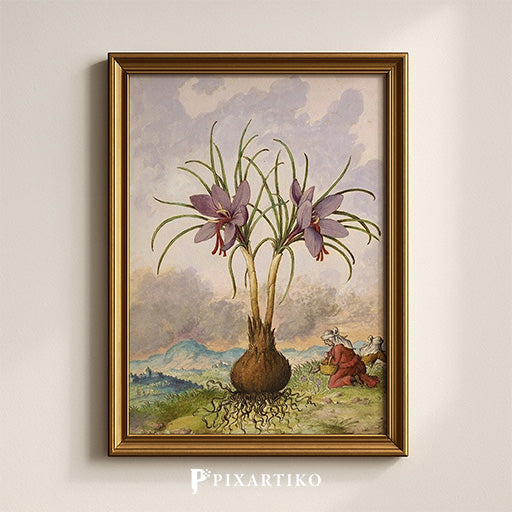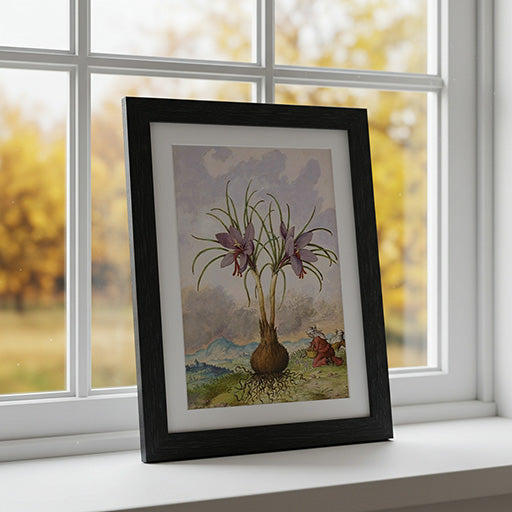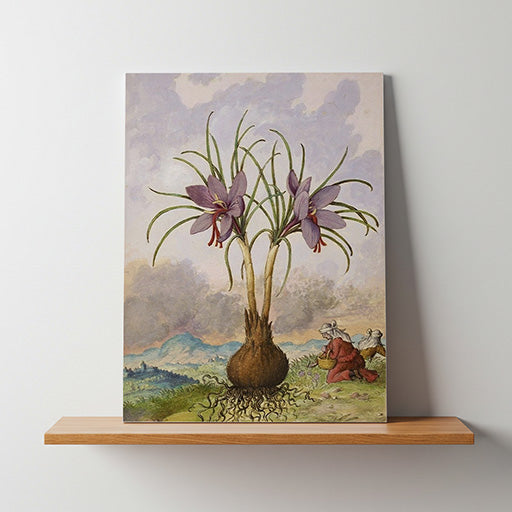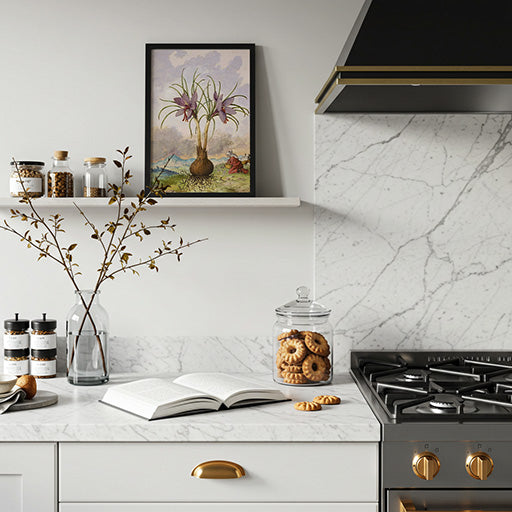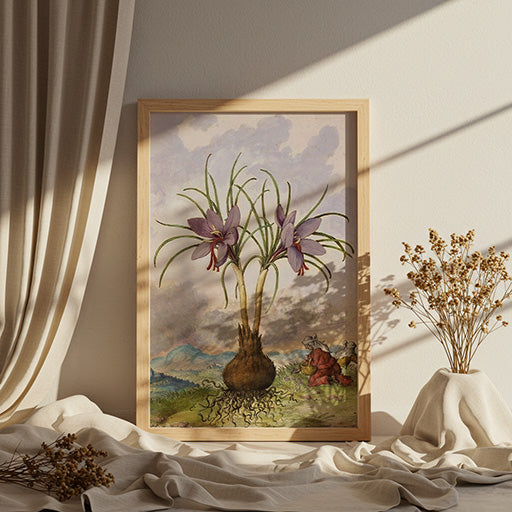Crocus sativus | Vintage Botanical Print
Crocus sativus | Vintage Botanical Print
No se pudo cargar la disponibilidad de retiro
Vintage Botanical Print | 16th-Century Herbal Illustration | Antique Floral Art | Printable Wall Decor | Digital Download
Add timeless elegance to your space with Crocus sativus, a beautiful botanical watercolor illustration from the 16th century by Italian artist and botanist Gherardo Cibo. Part of the expanded herbal edition of Dioscorides by Mattioli, this artwork features the saffron flower in rich detail, set against a scenic landscape.
Perfect for lovers of vintage botanical art, antique floral decor, natural history illustrations, or herbal medicine prints seeking meaningful and artistic printable wall art.
➤ Instant digital download
➤ High-resolution file, ready to print
➤ Ideal for cottagecore decor, botanical kitchens, floral collections, or herbalist studios

Pixartiko Collective – Usage License
Prints allowed for personal use and resale only as physical products in local shops. Use in other physical goods permitted if pixartiko.com is credited when possible.
Digital resale, sharing, or publishing is strictly forbidden.
Designs are not public domain and cannot be distributed online.
© pixartiko.com – All rights reserved.
Print Sizes
🖼 Included Print Sizes (No Cropping Needed)
This high resolution digital file is optimized for printing at the following standard sizes, no cropping or borders required. Just download, print, and frame:
| Inches | Centimeters | Suggested Use |
|---|---|---|
| 11.7 x 16.5 | A3 – 29.7 x 42 | Wall art, poster, vertical frame |
| 8.3 x 11.7 | A4 – 21 x 29.7 | Standard frame, home office decor |
| 5.8 x 8.3 | A5 – 14.8 x 21 | Small prints, journaling inserts |
| 4.1 x 5.8 | A6 – 10.5 x 14.8 | Greeting card, mini gift |
| 7 x 10 | 17.8 x 25.4 | Portrait print, versatile framing |
| 5 x 7 | 12.7 x 17.8 | Classic photo size, shelf display |
🖨️ All sizes are print-ready at 300 DPI, maintaining the original image ratio. No cropping or borders required.
📂 Your download includes:
- 1 high resolution JPEG file (2134 x 2988 px).
- Artistic Declaration Certificate in PDF.
- Free gift: The Ages of Painting guide — a visual journey through the history of painting.
🎨 Need a different size or format?
No problem! Just send me a message and I’ll be happy to adapt it for you.
Art Review
“Crocus sativus” by Gherardo Cibo: Where Roots Meet Empire and Petals Whisper Wealth
Among the many treasures of 16th-century botanical art, few works resonate with the layered elegance and quiet intensity of Gherardo Cibo’s “Crocus sativus”. Here, the saffron crocus —humble in size but mighty in cultural and economic significance— is rendered not merely as a plant, but as a living monument. It is an ode to cultivation, commerce, and the meditative dignity of labor.
Two flowering stems rise like twin towers from a bulbous base, their lilac petals open in symmetrical fanfare. The stylized saffron strands —the stigmas, vibrant red-orange— curl out from each flower like delicate filaments of wealth. The composition is bold and vertical, a botanical totem that commands the viewer’s attention while never relinquishing its rootedness. Beneath the flowering stems, an elaborate web of roots mirrors the hidden infrastructure of empire: quiet, invisible, and essential.
Yet Cibo’s genius lies not only in his precision but in his storytelling. As in many of his folios, the plant exists not in isolation but within a world. In the lower right, saffron gatherers bend over the earth in crimson robes, evoking both ritual and repetition. These figures are not generic; they are part of the life cycle of the crocus, anchoring its ethereal beauty to human toil. The cloud-filled sky and distant hills imbue the composition with quiet drama, as though the plant itself has summoned its own mythological atmosphere.
The contrast between the richly painted flower and the muted pastoral figures is no accident. Cibo elevates the saffron —once a symbol of nobility, medicine, and currency— into a beacon of visual luxury, while never forgetting the humble hands that bring it forth from the soil. It is a Renaissance paradox: opulence rooted in labor, beauty born of patience.
In “Crocus sativus”, Gherardo Cibo offers more than a study in plant anatomy. He gives us a visual philosophy: that behind every bloom lies a story of landscape, labor, and longing. It is a work that dignifies the botanical, sanctifies the rural, and reminds us that sometimes the world’s greatest riches grow quietly, one filament at a time.

Share
